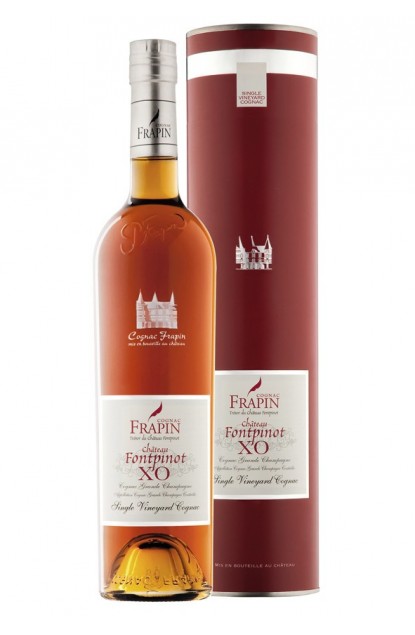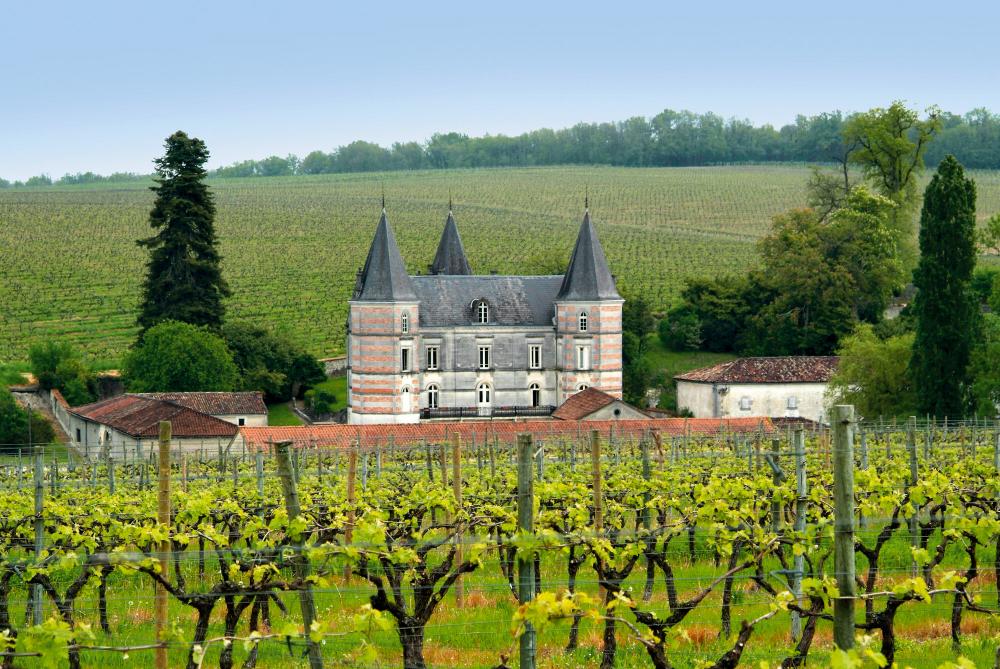Best Cognacs-Fabulous Frapin Cognac
Frapin is one of the finest and oldest Cognac houses in France and still produce their eaux-de-vie from their own vineyard on the estate. Controlling the quality at every step, from grape to barrel.
Taking craftsmanship to the highest levels of excellence, Frapin’s style embodies the very essence of Cognac. The whole estate, including 240ha of vineyards, lies in the Grande Champagne area which is regarded as Cognac’s best appellation. Still in original family ownership, the family can trace their vine growing and distilling history back to 1270. Frapin combines the knowledge with well-established methods passed down through the generations to hand-craft cognacs that are exclusively harvested, distilled and aged on their estate.
Established in South-West France since 1270, 21 generations of the Frapin family have been, at first wine growers, and then distillers, and owners of 240 hectares of vineyards in Grande Champagne.
Their history and expertise has been handed down from generation to generation.
The current CEO of Frapin Cognac is Jean-Pierre Cointreau, grandson of Marie Frapin, and he is also CEO of Gosset Champagne.
History: of Frapin Cognac
1270
The Frapin family arrived in Charente, near the village of Segonzac and were winegrowers at first, eventually becoming distillers.
1494
Birth of François Rabelais, a French Renaissance writer, physician, humanist, monk and Greek scholar. Historically regarded as a writer of fantasy, satire, and grotesque, bawdy jokes and songs. The son of Anne Catherine Frapin and Antoine Rabelais. Maison Frapin owes much to its illustrious forebear, the famous writer who, among other works, authored Gargantua and Pantagruel.
1534
Rabelais’s nephew, Jehan, is made “Maitre Queux-Sommelier” by KIng Francois I. This role gives him full dominion over the kitchens and the key to the king’s cellar.
1697
King Louis XIV awards a coat of arms to his apothecary, Pierre Frapin. The Frapin family coat of arms is born, made up of the fleur-de-lys, symbolising the king, and two trees, lepidodendrons, a symbol of apothecaries.
1872
Henri Frapin adds three towers to the Chateau Fontpinot, finally completing the Chateau as we know it today.
1900
Universal Exhibition of Paris: Cognac Frapin wins a gold medal.
2003
Frapin vintage 1948 is served at a dinner at 10 Downing Street for Queen Elizabeth II and her government ministers.
Awards:
Cognac Frapin is given the “Excellence Francaise” label. Set up in 2009, each year Excellence Francaise selects the most dynamic companies and institutions in France. The award recognises the talent, creativity and innovation of the people from these companies in promoting (the influence of) France around the world.
Frapin Coganc Vintage 1991 wins the tite of “Best Cognac of the Year” at the International Spirits Challenge (ISC) in London
The Frapin Cognac “Multimillesime no 6” is voted “Best Cognac in the World” by the World Cognac Awards.
A Brief History Of The Cognac Region
Cognac is a product with a Protective Designation of Origin (or PDO) which guarantees its origin and authenticity. It comes from the Cognac region of Western France and has a precise framework that is controlled by law.
The Cognac region stretches over 75 000 hectares, around the River Charente, and benefits from a maritime climate (warm summers and mild winters). Its vineyards are divided into six sub-regions; Grande Champagne, Petite Champagne, Borderies, Fin Bois, Bon Bois and Bois Ordinaires. These sub-regions are differentiated by the respective characteristics of their products based on the composition of the soils.
Cognac’s premier sub-region is Grande Champagne. Its hillsides offer the best exposure and promote perfect grape maturity. The soils are composed of friable limestone and chalk that help regulate humidity and temperature whilst providing good drainage. Eaux-de-vies from Grande Champagne have elegant, floral bouquets and are ideal for long ageing.
Frapin: An Exceptional Terroir
Frapin’s single family estate includes 240 hectares of vines in the heart of Grande Champagne, the premier cru of cognac. In the middle of the estate lies an elegant 18th century property called Château Fontpinot. Cognac Frapin is the only cognac house in Grande Champagne that can be called a Château.
Frapin grow a grape variety commonly called Ugni Blanc to produce their cognacs. This grape variety has the advantage of being late ripening, having low alcohol levels (which give better aromatic concentration) and high acidity levels. These acidity levels help to protect the wine until the distillation.Unlike many other cognacs, Frapin cognacs come exclusively from grapes grown on their estate.
Mastery Of The Vineyard
Frapin have been cultivating vines for 21 generations. Between tradition and modernity, the techniques used by their vineyard manager aim to obtain healthy grapes harvested at optimum maturity. Once harvested and pressed the juice obtained is fermented in their own vats. This is the winemaking process or vinification which are adapted to meet Frapin’s requirements for wines that will release their full aromas during distillation.
Artisanal Distillation by Tasting
Frapin’s Charente wines are transformed into exceptional cognacs by their master distillers. They distil on lees as it brings more interesting flavours to their cognacs. The lees are dead yeast cells, left over from fermentation, that are placed within the still.
Frapin master distillers control distillation which takes place in six copper stills of 25 hectolitre Stills. The wine is heated by the boiler which causes the alcohol to evaporate and rise up through the swan neck. It then passes through the a coiled pipe, which is cooled with cold water, and condenses creating an impure alcoholic liquid, at 30 to 32 degrees alcohol by volume, known as brouillis. The brouillis is distilled for a second time creating a bonne chauffe. Produced by double distillation, cognac is the very soul of the wine from which it came. The master distiller takes the heart of the bonne chauffe concentrating the delicate aromas and flavours into a colourless eaux-de-vie which is heated to 71 degrees alcohol by volume.
Ageing: The Work Of Several Generations
Two factors have an impact on the ageing of cognac; the wood of the barrels and the cellars in which they are stored.
Ageing by wood:
The cognacs are aged in Limousin oak barrels. It is the wood that gives cognac its warm colour by releasing tannins when in contact with the eaux-de-vie. Frapin use three types of barrels. The first are new barrels which quickly transmit colour and aromas to the cognac. After a short time the cellar master will move cognacs to older barrels which we call roux. These barrels have less impact and the cognac is left here for longer to monitor their evolution. Ageing ends in century old casks that no longer provide no colour or aroma to the cognac. Instead they allow the ageing process to progress through oxidation and evaporation; the angel’s share.
Ageing in the cellars:
The barrels are stored in different cellars around the estate according to their individual characteristics. The cellar master is responsible for selecting and changing the position of each barrel over time according to the ageing conditions sought for each. He can place them in one of two categories of cellars.
Humid cellars are at ground level on clay floors where the humid atmosphere allows moderate evaporation from the barrels bringing roundness and suppleness to the cognac. Dry cellars are upstairs in the attics where low humidity leads to more rapid evaporation and brings additional delicacy and elegance to our cognacs.
Grande Champagne cognacs need time to express their exceptional aromas. This is why Frapin age the cognacs for longer.
Blending:
The last step before bottling, blending, is crucial for the cellar master. As a true artist, he must assemble each blend selecting from the palette of eaux-de-vies available to him in order to obtain consistency of quality and character. The goal is to keep Frapin’s style year after year. A true blend of rigour, intuition and experience.
From the cultivation of its vines located in Grande Champagne, through artisanal winemaking and distillation over lees, then ageing in century old humid or dry cellars, everything is brought together to guarantee the continuity of the Frapin style.
This quality and experience are rewarded each year with prizes and medals at international competitions. Authenticity, elegance, fineness, and even flamboyance have inspired the new presentation of Château de Fontpinot, Frapin’s Château’s special old reserve.
We highly recommend the Frapin, Chateau de Fontpinot X.O. Château de Fontpinot represents the exceptionel qualities of a Grande Champagne Premier Grand Cru Cognac. Moreover, it is a very old Single Estate Réserve, issued exclusively from the Château’s own 788 acre domaine and copper distilled. Being exclusively harvested, distilled, aged and bottled at the Estate, this Cognac merits the very rare (in Cognac) ‘Château’ denomination. This XO Cognac is the result of a very long ageing and dry cellaring, which confers a subtle and complex bouquet. Château de Fontpinot unleashes a veritable concentration of aromas: generous vanilla, wild flowers, and candied fruit recalling oranges and apricots, accompanied by nuances of Port and the famous ‘Rancio’, so characteristic of very old Cognacs. This very old Château de Fontpinot Réserve offers balance and a persistent finish. It shows the true signature of a Grande Champagne Cognac that has been patiently aged on its lees.












